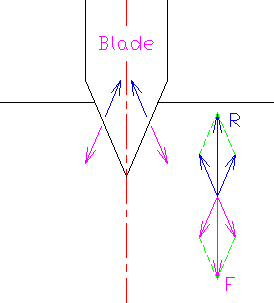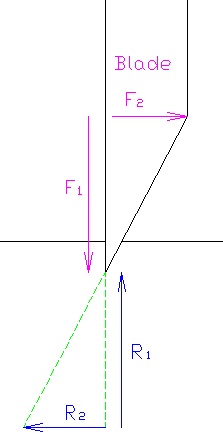| Special Knives | Kitchen knife, machete... watanabeblade.com ŠThe other knives |
|
| Special | Standard | Professional |
| Hunting knives! | ||||||||
 |
||||||||
Kintaroame Echigo Santou, single bevel blade, Kintaroame steel blue, cherry blossom handle, wood sheath Blade length 250mm, thickness 6mm, width 42mm, total length 430mm JPY150,000 Kintaroame Kukuri Tou, double bevel blade, Kintaroame steel blue, leather handle, wood sheath Blade length 270mm, thickness 6.5mm, width 41mm, total length 425mm JPY170,000 Kintaroame rope cutting knife, single bevel blade, Kintaroame steel white, wood sheath Blade length 240mm, thickness 6.5mm, width 45mm, total length 405mm JPY160,000 Shipping your charge (Shipped Internationally) |
| What are the differences between double bevel blades and single bevel blades? | ||||||
Double bevel blades, for example western style knives (Gyuto, petite knife, etc), Banno knives, Nakkiri knives, etc have a bevel on each side of the blade. They are ground with two rounded heels and can make a straight cut through food.  On the other hand, Japanese single bevel blades (e.g. Yanagi knives, Deba knives, Usuba knives, etc.) are ground with a heel on one side and a flat or slight hollow on the opposite side. They are ideal for paring. They make a cut that slants slightly to the left, and tend to separate slices effectively. So it is easy to mince quickly using these knives. Also single bevel blades stick to tissue as they cut. The result is food with a beautiful and glossy cut surface. This detail is very important to the graceful presentation valued in Japanese cooking.
 In the case of a double bevel knife, the angleĆ can not be reduced to the extent of the angleĆ in the case single bevel. Finally, if you use a single bevel blade for paring, or whittling, you will notice that it cuts into branches more smoothly and much smaller acute angle than a double bevel blade. |
| To English top page |
Payment, Shipping... |
Biograph |
Contact Us |
Copyright (C) Watanabe Blade. All Rights Reserved.







